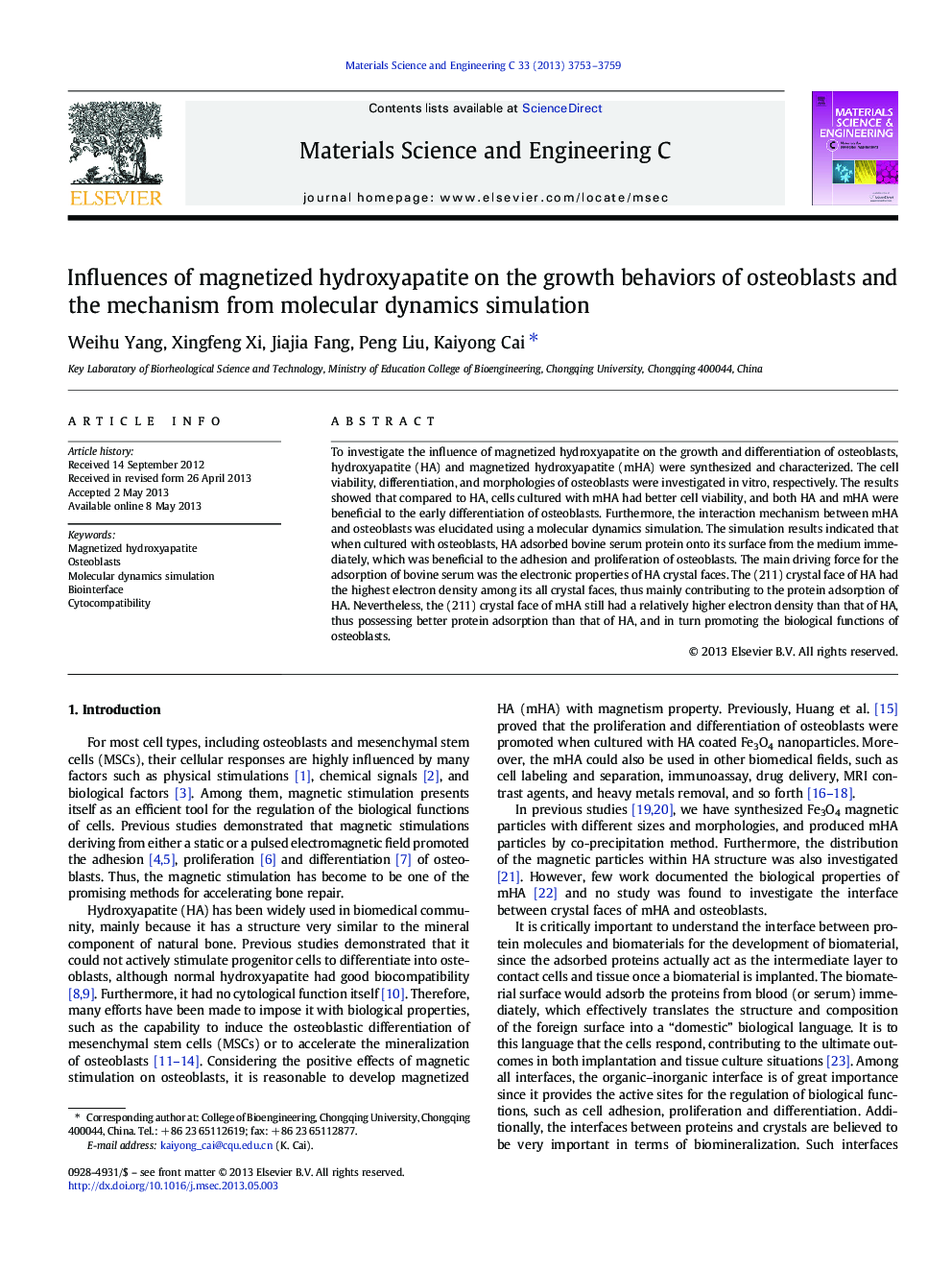| Article ID | Journal | Published Year | Pages | File Type |
|---|---|---|---|---|
| 10614546 | Materials Science and Engineering: C | 2013 | 7 Pages |
Abstract
To investigate the influence of magnetized hydroxyapatite on the growth and differentiation of osteoblasts, hydroxyapatite (HA) and magnetized hydroxyapatite (mHA) were synthesized and characterized. The cell viability, differentiation, and morphologies of osteoblasts were investigated in vitro, respectively. The results showed that compared to HA, cells cultured with mHA had better cell viability, and both HA and mHA were beneficial to the early differentiation of osteoblasts. Furthermore, the interaction mechanism between mHA and osteoblasts was elucidated using a molecular dynamics simulation. The simulation results indicated that when cultured with osteoblasts, HA adsorbed bovine serum protein onto its surface from the medium immediately, which was beneficial to the adhesion and proliferation of osteoblasts. The main driving force for the adsorption of bovine serum was the electronic properties of HA crystal faces. The (211) crystal face of HA had the highest electron density among its all crystal faces, thus mainly contributing to the protein adsorption of HA. Nevertheless, the (211) crystal face of mHA still had a relatively higher electron density than that of HA, thus possessing better protein adsorption than that of HA, and in turn promoting the biological functions of osteoblasts.
Related Topics
Physical Sciences and Engineering
Materials Science
Biomaterials
Authors
Weihu Yang, Xingfeng Xi, Jiajia Fang, Peng Liu, Kaiyong Cai,
